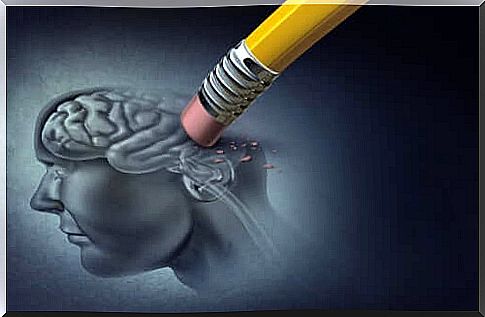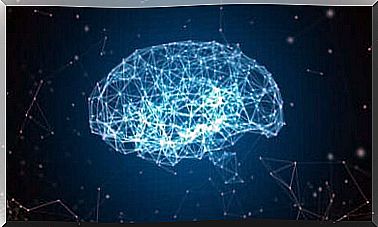LATE Dementia – A Newly Discovered Type

In this article we are going to talk about LATE dementia. More than 46 million people currently suffer from Alzheimer’s disease. The study of dementia in general is therefore one of the greatest challenges for science today.
Despite the long road traveled, there is still much to discover. Therefore, it is also inevitable that scientists will continue to find new conditions. An example of this is the discovery of LATE dementia, a new form of dementia.
Although several forms of dementia are known and the possibility exists that they mix with each other, certain contradictions caught the attention of scientists.
For example, the cognitive decline in patients with severe Alzheimer’s who were older than eighty years was greater than expected. Apparently this new form of dementia could explain these gaps.

LATE dementia
The acronym LATE refers to predominantly limbic TDP-43 encephalopathy, associated with age. LATE is related to the TDP-43 protein. Scientists already knew about it and knew that it also plays a role in other degenerative diseases, such as amyotrophic lateral sclerosis (ALS) or frontotemporal degeneration (FTD).
The identified new form of dementia, LATE, therefore manifests itself at an older age, especially in people older than eighty years. So working groups for the diagnosis of Alzheimer’s disease came up with this term.
They did this with the intention of including other common TDP-43 proteinopathies. Some with cognitive impairment, including, for example, hippocampal sclerosis and its subtypes.
There is a link between TDP-43 proteinopathy and pure progressive amnesia very similar to Alzheimer’s disease. This, along with the lack of knowledge and evidence to diagnose proteinopathy, has led some scientists to take steps in this case.
They need to find out whether a large percentage of people diagnosed with Alzheimer’s can actually have LATE.
TDP-43 proteinopathy involves the loss of its normal immunoreactivity, along with its transfer to the cell’s cytoplasm. It also implies an abnormal accumulation of proteins.
How do you observe it?
Currently, scientists can only detect TDP-43 changes through an autopsy of the brain. So they do this post mortem. Based on these kinds of studies and their findings, experts proposed a three-stage disease evolution:
- Proteinopathy in the tonsils. Scientists found that the volume and shape of the amygdala are affected in LATE dementia. Also, that these structural changes are indicative of cognitive decline. In fact, the link between these tonsil observations and the change due to LATE is much stronger. Much more than anything between hippocampal atrophy and Alzheimer’s.
- Proteinopathy in the hippocampus. Researchers found that hippocampal atrophy is greater in patients who have had LATE dementia than in patients with common Alzheimer’s disease. This atrophy of the hippocampus is asymmetric. It also apparently follows a path from front to back.
- Proteinopathy in the frontalis medius gyrus. This is the area of the frontal lobe, so dementia would already affect higher cognitive processes, such as attention or learning.

Neuropsychological features
Like other dementias, LATE manifests with amnesia, which can develop and affect other cognitive domains that affect daily activities. However, certain parts show a slightly different pattern.
What little evidence exists indicates that patients with LATE show a more gradual decline compared to Alzheimer’s patients. In addition, as expected, those with LATE and Alzheimer’s comorbidities deteriorate more quickly and their symptoms are more severe.
In people with LATE, the decline in episodic memory is more noticeable. However, they also show severe impairment of other functions, especially in the later stages.
For example, it appears that patients with good verbal fluency have a higher risk of developing LATE, despite their poor ability to remember a list of words.
Future Directions Regarding LATE Dementia
It is still too early to establish neuropsychological profiles. In fact, there are as yet no MRI devices capable of detecting the change of proteins in vivo .
So we can only wait for future research that will yield new biomarkers and indicators, as well as motor, autonomic, or neuropsychiatric features.









